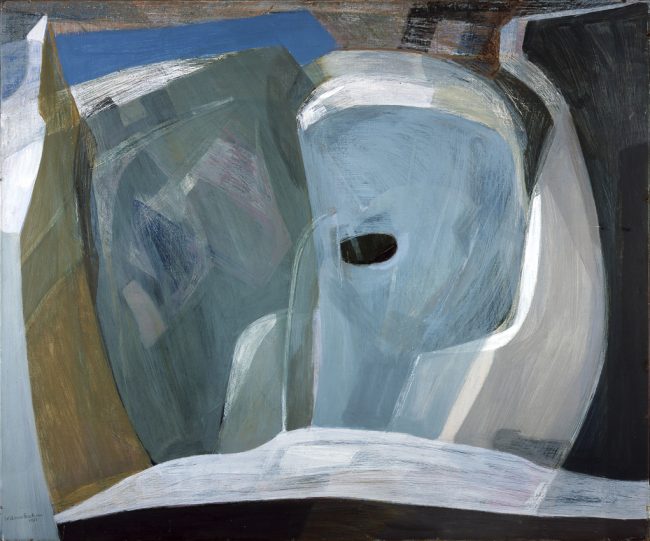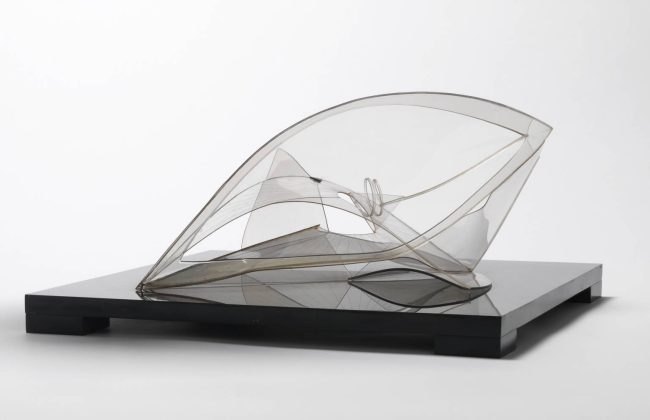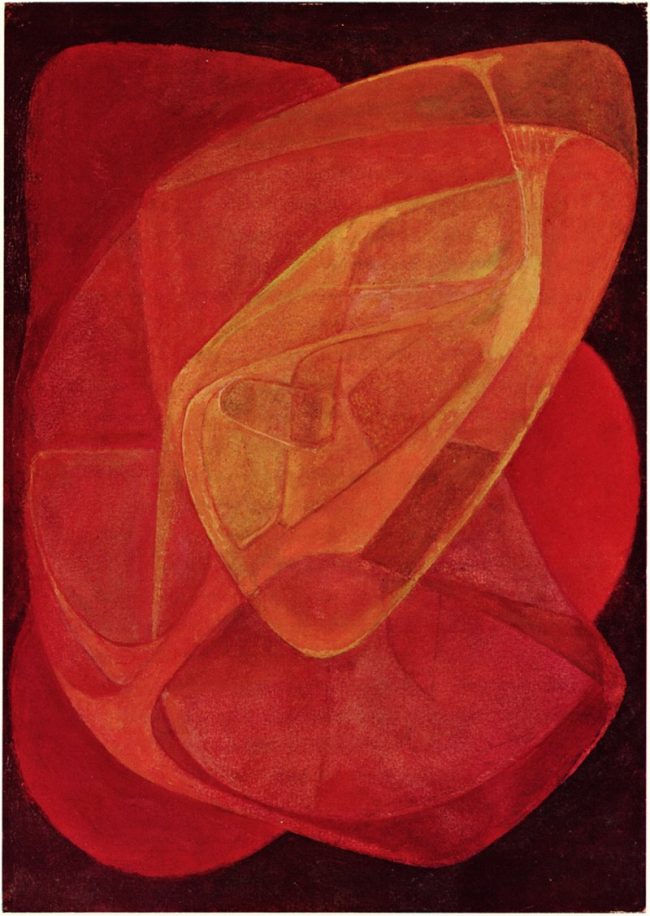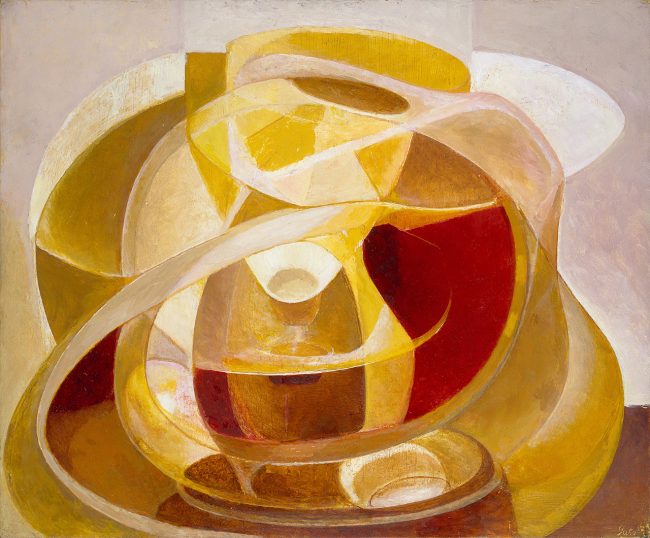WBG and Naum Gabo

Glacier Chasm, 1951, Oil on canvas, National Galleries of Scotland
A major exhibition of Naum Gabo is being hosted by Tate St Ives. Gabo, one of the pioneers of constructivism, lived in St Ives between outset of World War II in 1939 and November 1946 when he and his family emigrated to the USA. As friends of Ben Nicholson and Barbara Hepworth, he and his wife Miriam followed them from London to Cornwall to escape the war, first staying with Adrian Stokes and Margaret Mellis at Little Parc Owles in Carbis Bay, before finding their own bungalow Faerystones nearby.
Many of the artists working in St Ives around this time came to know Gabo, including Wilhelmina Barns-Graham who was introduced to him through her Edinburgh College of Art friend Mellis. She liked Gabo very much and wrote of him in her diary at the time: ‘Gabo is older [than his wife Miriam] and I have met him several times now as I write. That first time I was somewhat excited. He has been working – and then after tea decided to mow the lawn and brought in a bright blue and scarlet mower. He speaks English very poorly. I like him so much – I gather everybody does. He and Ben Nicholson dislike music!! Gabo is dark going bald. Smallish. Wore brown trousers, white woollen jersey + red tie.’ (1)
While Gabo was in St Ives, there is no evidence of his theories or vision in Barns-Graham’s work of this period. Her paintings then showed a steady progression from her Edinburgh College of Art background but indicate nothing of Gabo’s notions of rhythm, movement, time and structural force that inspired the transparency of his sculptures, or his paintings that are ‘meditations on the role of colour in the construction and reading of kinetic form’. (2) However, Barns-Graham’s visit to the Grindelwald Glacier, Switzerland in 1949 changed all that. This occasion was a transformative experience. Here was the reality of Gabo’s explorations of form in space as found in the real world.
As explained by Lynne Green, ‘Gabo was concerned not simply with the outer surface of form, but with the expression of internal space through series of linear elements and structural planes: which imply volume without resorting to solid mass… The possibilities of this for painting were very exciting: implies and suggested three-dimensionality is all that is attainable on the flat canvas plane, and artists were no longer interested in pursuing the illusion of perspective depth…..The idea that one could construct a sense of volume, and of internal space, through linear geometry and the optical effects of colour – while retaining the identity of the painting as a two dimensional object – had far reaching implications……In the glaciers at Grindelwald Barns-Graham had at last found a subject with which she could explore the implications of this in her own work.’ (3)
Barns-Graham was mesmerised by the glaciers. She wrote of the ‘Enormous standing forms, polished like glass with sharp edges…….This likeness to glass and transparency, combined with solid rough ridges made me wish to combine in a work all angles at once, from above, through, and all round, as a bird flies, a total experience.’ (4) Glacier Chasm is one example.
The glacier series was widely acclaimed, putting Barns-Graham on the artworld map. These works are still regarded as the first highlight of her artistic career. There is no doubt that Gabo opened her eyes to the possibilities of constructivism but she was not an artist whose natural proclivity led her down that theoretical road. Her work was tied to the world she observed around her, not to a purely intellectual abstraction. Even when comparing her resulting paintings to those of Gabo (see below), though visual similarities are evident, they are not of the same ilk. Nonetheless, without Gabo it is highly unlikely that she would have made the connection while up on the glacier.
Last word……at one time Barns-Graham owned one of Gabo’s sculptures, a version of Spiral Theme from 1941 (the version illustrated here in Tate collection). She sold it sometime before 1962 to Harold Diamond, an American art dealer and collector. It is one of those items she sorely missed later in her life.
Notes:
- Wilhelmina Barns-Graham Notebook Diary 1939-1947. Entry for unspecific day March 1940, page 24.
- Lynne Green W. Barns-Graham – a studio life, Lund Humphries, 2001, new edition 2011, p. 123
- Lynne Green, ibid, pp.123-126.
- Lynne Green, ibid, p.107.
Naum Gabo at Tate St Ives, 25 January – 3 May 2020
For more information visit https://www.tate.org.uk/visit/tate-st-ives

Naum Gabo Spiral Theme 1941 Tate © Nina & Graham Williams/Tate 2020

Naum Gabo Red Kinetic Painting 97 1943 Estate of Naum Gabo. © Nina & Graham Williams

Naum Gabo Construction in Depths 1944 Solomon R. Guggenheim Museum, New York, Solomon R. Guggenheim Founding Collection. Naum Gabo © Nina & Graham Williams
